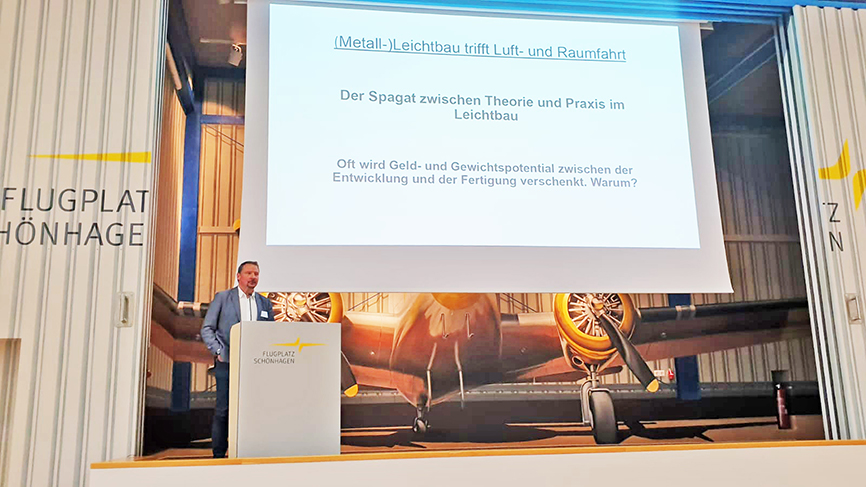Leading aerospace engineers met at Schönhagen airfield in October 2021 for the conference “(Metal) Lightweight Construction Meets Aerospace”. In addition to numerous top-class speakers, I was also invited as a presenter – which immediately raises the question: Why actually? It’s about lightweight metal construction and not composites.
The clear distinction between lightweight metal construction and lightweight composite construction is becoming blurred
In fact, the strict separation between lightweight metal construction and construction with composites has long since ceased to make sense because there are so many interfaces. Just think of hybrid components such as aluminium-honeycomb. Or metallic inserts for screw connection points and bonding.
Interfaces are always critical in any project, because there are countless sources of error here. Defects in detail, which still seem tolerable when one material is considered on its own, can literally become a sticking point when interacting with other materials.
Interface problems are created in the design
One reason for a lack of harmony between materials that have to be combined is the typical procedure in component development: the development department creates a 3D model, the purchasing department looks for a supplier. It is ordered, delivered and then often comes the surprise.
Why? Because the development overlooked special features that are decisive for the later quality of the product. For example, when the data for honeycomb cuts are taken directly from the 3D model without optimising them for production.
Because the 3D model does not know where additions are necessary in the cut to avoid later creases or defects. And we’re not just talking about visual defects here, the later function can also be decisively impaired. In the aerospace industry, this is an absolute super gau.
Competent planning solves problems before they arise
How can we prevent them? The ideal procedure begins with the creation of a specification sheet for the planned component. And in detail. Among other things, questions are answered about:
- Mechanical properties / temperature – surfaces / quality targets
- Resistance
- Monolithic or with core material
- Expected quantities
On this basis, the material and manufacturing process can be determined. Then the design is carried out – by a designer who not only knows his software, but also knows which special features he has to take into account for later fault-free production.
The supplier is also selected primarily on the basis of his competence in the manufacturing process.
If at any point doubts arise about the competence of one of the parties involved, then by all means bring additional expertise into the team.
The profit is also in the avoidance of errors
The whole process may seem a little more involved than the often practised “will-be-good” procedure. But from my experience as an expert and trouble-shooter in such cases, I know: it is much more cost-effective and time-saving to put a little extra effort into the development compared to the effort that results when the customer later fails to sign off on a delivery and lawsuits for delay or liability damages are threatened.
Where do you have a need for optimisation that I can support you with?
Good planning pays off several times over in the development of carbon composite components. Let us discuss your project early on! You can reach me at +49 7161 988-4470 or info@linge-composite.de
